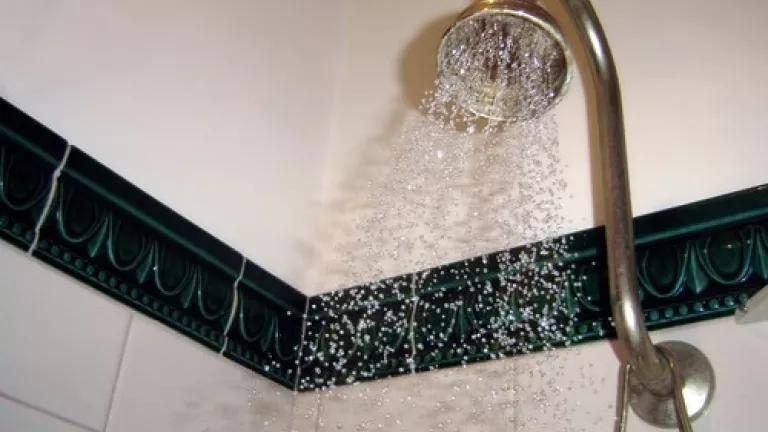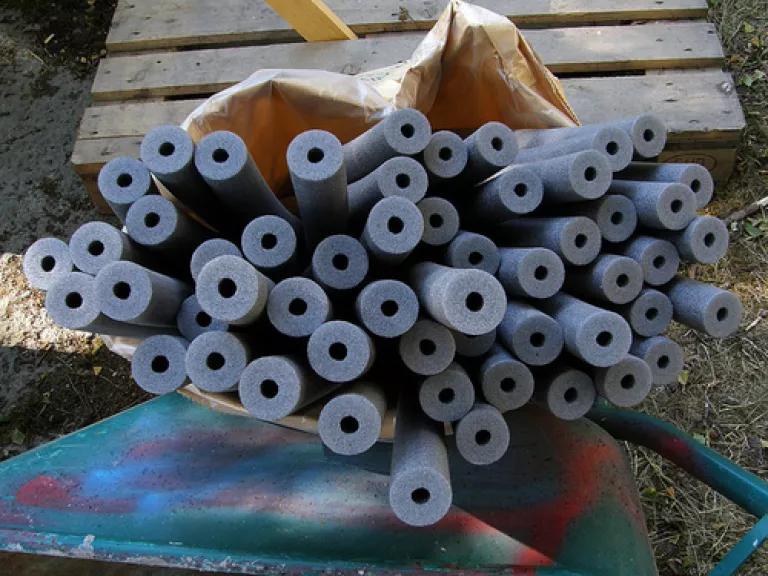
The crack of the bats during the first month of the new baseball season brings a bit of excitement to lots of us who enjoy what was once considered the “national pastime.” But one activity – repeated more than 200 million times a day – gets far more Americans lathered up than Major League Baseball on the best of days: standing by the shower – passing time – waiting for the water get hot enough to step in.
Back in January, I wrote of NRDC’s efforts to modify the building and plumbing codes for new buildings to cut down on the waste of water, energy, and time waiting for hot water in new homes. We invited readers to take a web-based poll to report how long they usually waited for hot water before stepping into the shower, and what they usually did during this time.
The results of the poll are now in. While our 63 respondents are by no means a statistically valid sample of all US households, the results are consistent with expert views on the topic, and suggest that the plumbing in our buildings is forcing many of us to waste considerable amounts of water and energy, as well as time, on a daily basis.
For all respondents, the time usually spent waiting for hot water to arrive at the shower averaged 68 seconds – or enough time at typical showerhead flow rates for about 1.8 gallons of cooled-down hot water to run down the drain.
Our respondents live in buildings that are roughly representative of the US housing stock – over 60% reported their experience in single-family homes, and the great majority of these homes were 20 or more years old. For single-family homes, the average reported wait time for hot water at the shower was 71 seconds. Interestingly, the average wait time in homes more than 20 years old was 67 seconds, while the average wait time for newer homes was 84 seconds. Newer homes tend to have more square footage and longer lengths of pipe between the hot water heater and the furthest bathroom fixtures. Long lengths of uninsulated pipe mean that more cooled-down hot water has to be purged before hot water arrives that is hot enough to use.
Those who live in apartments reported an average wait time of 65 seconds, a bit less than the average for single-family homes, which was to be expected due to the smaller square footage of apartments and the greater use of hot water recirculation systems in multi-family buildings. The small group of newer apartments performed relatively better, with wait times averaging 48 seconds compared with older apartments averaging 71 seconds.
|
Home |
Average Wait for Hot Water before Showering |
|
All Respondents (63) |
68 seconds |
|
|
|
|
All Single Family and duplex Homes (39) |
71 seconds |
|
All Homes 20 or more years old (27) |
67 Seconds |
|
All Homes 5 to 19 years old (11) |
84 seconds |
|
All Homes less than 5 years old (1) |
15 seconds |
|
|
|
|
All Apartments (24) |
65 seconds |
|
Apartments 20 or more years old (19) |
71 seconds |
|
Apartments 5 to 19 years old years old (4) |
48 seconds |
|
Apartments less than 5 years old (1) |
20 seconds |
What do people do while passing the time waiting for the hot water to get hot? Some just watch the water run down the drain, while others said they position a bucket in the shower to catch and use water that would otherwise go to waste (including water for later use to boil pasta – Bravo!). Many respondents reported doing absolutely nothing, while others reported a variety of activities, including getting undressed, stepping on the scale, laying out clothes, brushing teeth, putting on make-up (before showering?!?), preparing music, going to get coffee, walking away, and standing there fidgeting. Plus one unprintable activity, performed within an implausibly short period of time. We’ll leave it at that -- you know who you are.
What comes through from these responses is a picture of the forced acquiescence of millions of Americans with plumbing systems that operate inefficiently, wasting their time, energy, water, and of course money, on a daily basis. About one out of six of our respondents report usually waiting for hot water for 2 minutes or more. Yikes!
Whenever hot water is turned on but it is not hot enough to use, formerly hot water runs down the drain and the energy that was expended to make the hot water hot in the first place has gone to waste. From the perspective of the user, this is not wasteful in the sense of being reckless or careless – on the contrary, it is entirely rational not to step into a shower that has not yet warmed up. It’s the building design and piping layout that allow so much hot water to cool off quickly between hot water draws that is wasteful.

(Photo Credit: Eva Ekeblad | Flickr)
Next week, code officials meeting in Las Vegas will have the chance to curb this type of energy and water waste in new buildings. A committee of the International Association of Plumbing and Mechanical Officials is meeting to consider changes to IAPMO’s model plumbing code. Pending before the group is a proposal submitted jointly by NRDC and the United Association of Journeymen and Apprentices of the Plumbing and Pipefitting Industry. The NRDC-UA proposal would require that all hot water pipes in new buildings be insulated. NRDC estimates that pipe insulation can curb the waste of hot water in new buildings by 15 to 30%. Over 2 billion gallons of hot water are used in the US every day for showering, with faucet use adding even more. If we can start building new buildings with even modest savings in hot water use, the energy and water savings will really start to add up.
Insulation will not eliminate hot water waste or wait times, but it can make a meaningful reduction and start saving money and energy for new home purchasers on the day they move in. We think it’s time to build buildings that don’t force us to waste hot water on a daily basis, and insulation of hot water pipes is a sensible first step.

